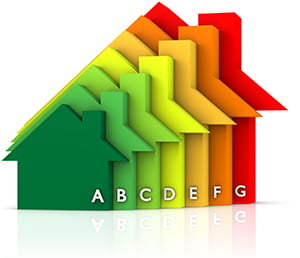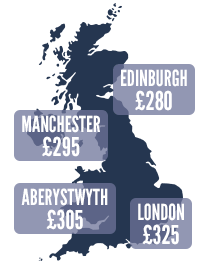Money Saving
If you find a broken link in this list, please report it to the webmaster.
Solar panels can mean big bucks. Photovoltaic panels generate electricity from the sun, and not only do they cut down on your energy bills, you can get paid for generating energy too.
However the Government slashed payouts on 8 February, which means for many people, the sums are much less likely to add up. This guide takes you through whether solar panels are right for you and how much you can earn.
CHAPTER I - Solar panel need-to-knows
"Solar power? Hang on, we don't live in California!" True, but it's all about daylight, not sunshine. Panels can still generate some electricity on gloomy days, vital when the weather's as dull as watching paint dry.
Before you stick them on your home, understand these key need-to-knows:
I.- There are two types of solar panel
The type we're talking about is photovoltaic solar panels – also known as solar PV – which catch the sun's energy and convert it into electricity that can be used to power household goods and lighting. The other type is solar thermal, which allows you to heat water and can cut down heating bills.
This guide shines a light on solar PV, as that's where you can earn money through generating your own electricity through the 'feed-in tariff', as well as save on your electricity bills. According to the Department of Energy and Climate Change, over half a million British homes have panels installed.
II.- You need a south-facing roof
To maximise what your panels can make, you usually need a predominantly south-facing roof. If your roof faces south-west or west you'll still get some benefit, but it may be less effective and you might not get the maximum savings.
While some early or late shading from other buildings or trees is okay, your roof should be unshaded between 10am and 4pm.
III.- You need a grade D Energy Performance Certificate

An Energy Performance Certificate (EPC) rates a building on its energy efficiency, from A (highly efficient) to G (inefficient). Once you get one, it's valid for 10 years. The amount you get paid for generating electricity depends on your building's rating, and you'll need one to register for feed-in payments.
If you've got a grade D or above, you'll be able to bag the full feed-in payment. From February, that'll be 4.39p/kWh. If your property scores below a D you'll only be eligible for a lower rate of 0.87p/kWh though.
So if you're assessed and rated E or lower, it's worth making the advised improvements to reach grade D before you register for the feed-in payments – remember, the feed-in rate is guaranteed for 20 years once you've registered. The Government has an online tool to help find an accredited assessor.
IV.- You can still switch energy supplier

Don't, for heaven's sake, think this locks you into your energy provider so you can't get cheaper bills (join the MSE Cheap Energy Club to stick on permanently low prices).
The feed-in tariff is supported by a number of suppliers, as it's mandatory for those with over 250,000 customers. Ofgem has a list of all of them on its website. Yet you don't need your energy supplier to be the same as the supplier that pays your feed-in tariff, so you're free to switch around.
V.- The further south you live, the more you can make

While you don't need a summer home in Hawaii to get some juice from solar panels, the further south you are can make a difference when it comes to their effectiveness. Remember, this is about daylight, not hours of sunshine. Northern homes get slightly less, so where you live needs to be factored in.
The Energy Saving Trust estimates that panels in Manchester could earn you and save a combined £295/year on bills, compared with around £325/year in London and £280/year in Edinburgh. See Does buying solar panels add up? below for full analysis.
VI.- Panels could push your house's value up or down
Some people worry that ugly panels plastered all over their roof could push the price of their house down. However, equally, a more efficient home generating its own energy may be more attractive to buyers.
Solar panels are a fairly hefty investment and might not be suited to those planning to move in the next few years – certainly you shouldn't expect a big upfront investment to be immediately reflected by a jump in your home's value.
Be wary that being tied in to a contract that remains with the property once you've left could be unattractive to buyers, whereas a buyer's ability to benefit from the feed-in tariff once they move in might make your house more appealing.
Think about how visible the panels are and ask local estate agents for their experiences before installation. When we asked the National Association of Estate Agents for an overview, it told us:
VII.- You shouldn't need planning permission
You don't generally need planning permission for solar PV systems. The big exceptions are if your property has a flat roof, is listed or in a conservation area. You might need to get approval from your council's building control team, so check with your local authority.
In England and Wales, the Government's Planning Portal says that panels are likely to be considered as "permitted development".
VIII.- Solar panels are generally low-maintenance
The Energy Saving Trust says little maintenance is required on a properly installed, well-designed solar PV system, though you'll likely need to replace the inverter – a gadget which is a key part of the mechanism – within about 20 years (£800ish).
Of course, though, things can go wrong. Check the installer warranty you get covers the 20 years you'll be getting the feed-in tariff. If the panels are damaged by something unexpected, like a storm, you may also be covered by buildings insurance – check with your insurer before you have them installed and bear in mind you may need to increase the sum insured.

IX- Use your solar panels at the right time and you'll max their value
Once you've got your panels installed and they're up and running, make sure you make the most of them by using them at the right time.
For example, in the winter, when there's less sunlight and you'll generate less solar power, you'll take more energy from the grid. It's a good idea to set appliances to run while it's light outside, staggering them to max the savings.
For tons more top tips from solar nerds, read the forum's Make the most of solar panels thread.
CHAPTER II.- Does buying solar panels add up? Can you recoup the outlay?
Whether they add up for you is all about how much you're paid back later down the line to cover your initial spend via electricity savings or government payments for you generating electricity.
I.- How much do they cost?
This is the key point to start with. The price of a typical solar panel system, including installation, is now around £5,000-£8,000. In the scheme's early days, a system this size used to cost £10,000-£12,000.
II.- How much can you make back?

There are three ways to recoup the outlay...
- Electricity savings. First and foremost, you can use the electricity your panels generate, thus reducing your electricity bills. The Energy Saving Trust estimates a typical 4kWp system can knock off around £65 from a family's bills each year.
Savings depend on the system size, electricity use, whether you're at home during the day to use the energy you're producing and other factors. If you can use more energy during the day when the panels are generating, you'll save even more as you'll need less electricity from the grid.
- The 'feed-in tariff'. This is a payment from the Government (but paid via an energy supplier) to pay households in England, Scotland and Wales for ALL the electricity they generate – whether you use it or not. The rate is 4.39p/kWh. Before rates were slashed in February 2016, you used to get 12.03p/kWh.